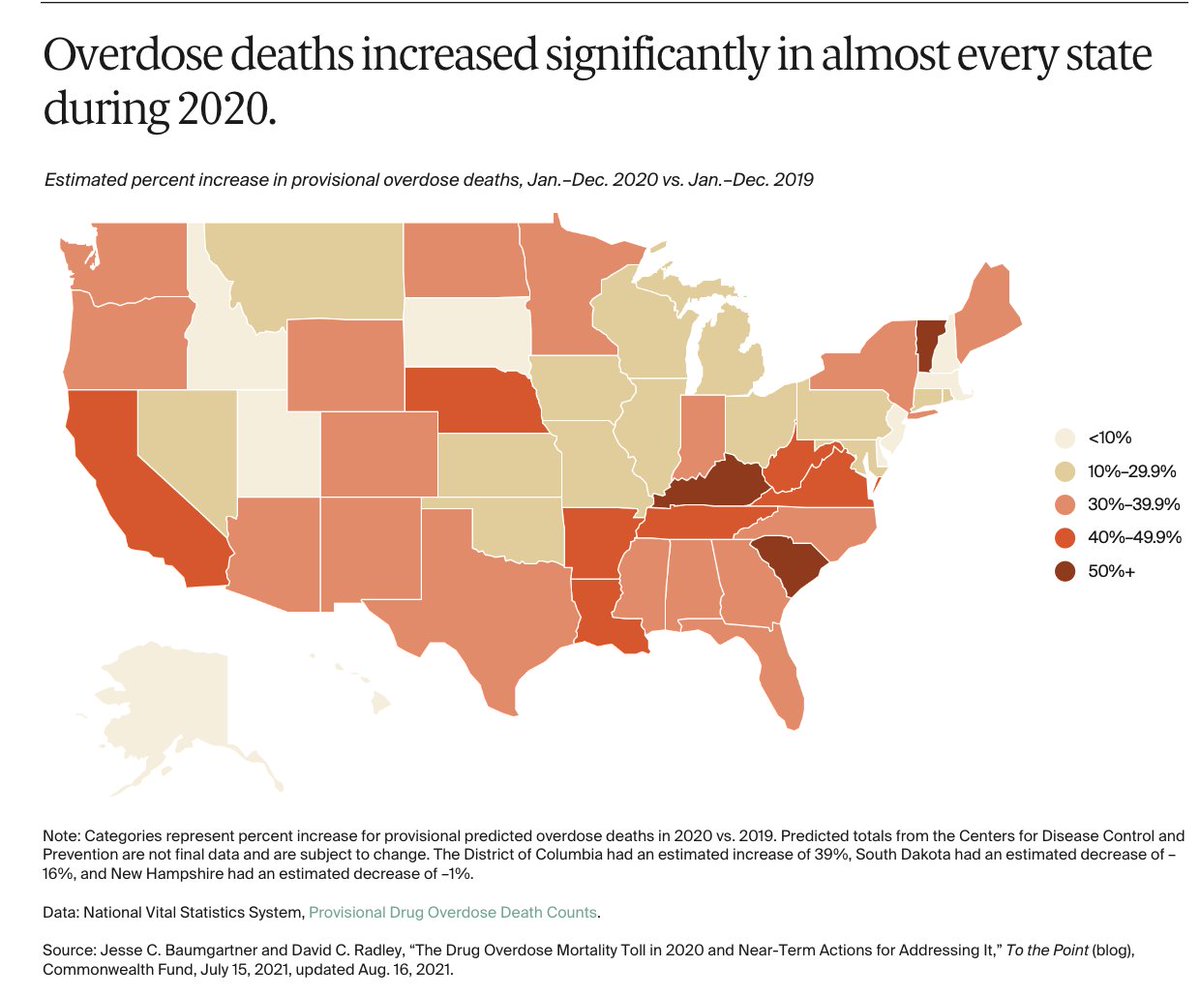
1/For any discussion of homelessness - please remember: the key driver of *total number of people homeless* in any area of the US is the number of units that are affordable to poor renters
2/Efforts to blame homeless numbers in West Coast cities to "fentanyl" are not based in evidence. Here's an opioid overdose per capita map. States with horrific overdose crises often have lower homeless counts per capita than ones like California, where the OD rate is lower 

3/Still not convinced? San Francisco's homelessness is high per capita. It's fair market rent for a 2-bedroom apartment is $3500!!! That translates downhill to poorer folks not being able to afford an extra bedroom or accommodate family members with problems of any kind 

4/Occasionally I see efforts to use the OD rate in any given West Coast city as the obvious indicator that "opioids" caused ⬆️ homelessness. This is NUTS
You know what county has the highest overdose rate in California? **Lake County***
Count of homeless persons is 241.
You know what county has the highest overdose rate in California? **Lake County***
Count of homeless persons is 241.
5/There are always, everywhere 2 questions
--Why are there more people who are homeless at this time or in this place
--Who is most likely to become homeless, conditional on the fact that there are people homeless?
--Why are there more people who are homeless at this time or in this place
--Who is most likely to become homeless, conditional on the fact that there are people homeless?
6/Why are more people homeless in one place or another? It's R-E-N-T & social policies related to that.
The market for entry level starter homes has been terrible for decades. The rental affordability issues are worst in Western states. Hello Los Angeles. jchs.harvard.edu/state-nations-…
The market for entry level starter homes has been terrible for decades. The rental affordability issues are worst in Western states. Hello Los Angeles. jchs.harvard.edu/state-nations-…

7/The right responses are to facilitate building affordable rental units. That means addressing NIMBY zoning, investment partnerships like the National (and state-level) housing trust funds, and assurance to the landlord that RENT will be PAID, so they are not taking a big risk!
8/To facilitate building, at this moment, the best available options (which are not perfect but a good step) are in the negotiated Build Back Better plan as noted by @dianeyentel
https://twitter.com/dianeyentel/status/1453739012578058241?s=20
9/If you are asking the OTHER question ("why is THIS person homeless and not THAT one?") yes it's perfectly understandable to infer that poor income, low social support, disability, and indeed mental illness/addiction are strong indicators of who "falls out" of the housing market
10/The best summation of the evidence we have right now comes from Mary Beth Shinn and Jill Khadduri "Homelessness in the Midst of Plenty and What to Do About It" - evidenceonhomelessness.com/recent_highlig…
11/Many studies tabulate correlates of homelessness- our research shows that among Veterans who have experienced homelessness, being unsheltered is tied to the NUMBER of personal vulnerabilities, and further impacted by community weather, rents & shelters
https://twitter.com/vahsrd/status/1415756602385354754?s=20
12/If you are a frustrated person living in a city with lots of unsheltered persons, I hear you. It's not easy to see sometimes.
But please understand: the condition of the person you see in a tent is not the REASON your community has a lot of people in tents.
But please understand: the condition of the person you see in a tent is not the REASON your community has a lot of people in tents.
13/If you think I don't understand how addiction can contribute to a person becoming homeless, think again. I'm an addiction clinician who works with people experiencing homelessness.
But that addiction is not the REASON your community has more people in tents than another.
But that addiction is not the REASON your community has more people in tents than another.
14/The number of people with roofs over heads has everything to do with how many roofs are affordable for how many heads that don't have high income. / fin.
• • •
Missing some Tweet in this thread? You can try to
force a refresh










